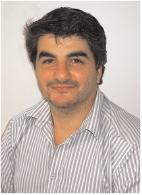Oil spill tracking buoy—revolutionising offshore response and recovery
Harry Houridis A and Mellor Peter AWorleyParsons.
The APPEA Journal 55(2) 495-495 https://doi.org/10.1071/AJ14130
Published: 2015
Abstract
April 2014 marked the four-year anniversary of the BP Deepwater Horizon Disaster; a rig explosion in the Gulf of Mexico that killed 11 workers and led to the worst offshore oil spill in US history. Oil gushed from the sea floor for 87 days before the well was capped an estimated 5 million BBL spilled into the Gulf, inflicting untold environmental damage.
The event highlighted how little the industry knows about containing deep-water oil spills or about how oil spreads. Oil washed up hundreds of miles away on coastlines in Louisiana, Alabama, Mississippi and Florida, but scientists struggled to determine where all of the oil had gone. Had some of it evaporated or was it hiding below the surface? Had it been carried by currents to the Gulf’s deep waters or perhaps even further? No one can say for sure.
The resulting science highlighted that oil drifts along the surface of ocean water at 97% of current speed, but at only a fraction of the wind speed. During the Deepwater Horizon Disaster, the tracking buoys sat too proud and were driven the wrong way by the wind. It is essential to track the currents, since they account for at least 95%–98% of the ultimate oil spill trajectory. WorleyParsons designed, developed and deployed an oil spill tracking buoy (OSTB) to provide a scientific instrument for capturing only the surface currents.
The specific gravity of each buoy is such that it tracks surface currents. Material selection and manufacture, ocean validation and telecommunication engineers came together to produce such a device, which is largely underwater but can continue to communicate with satellites.

Harry Houridis is a principal marine scientist with more than 25 years’ marine environmental consulting experience and he is the marine science manager for WorleyParsons in Australia East. He has been providing technical advisory services to the oil and gas industry since 1993, across all oil and gas producing regions of Australia and abroad. Harry has undertaken and managed a large number of studies for oil and gas customers looking at environmental effects of their upstream and downstream activities in the offshore environment. These have included seismic assessments, assessing impacts related to drilling activities, PFW discharge assessment and general operations. Harry is also involved in oil spill contingency planning and the design of operational and scientific monitoring plans. Customers include Santos, Apache, BHP Billiton, Origin Energy, VOGA, Eni Australia and Repsol. Key study areas have included the North West Shelf, Timor Sea, Bass Strait and the Otway Basin. |

Peter is the manager of ports, marine terminals and marine sciences in the WorleyParsons Perth office and he is a PhD candidate. Peter is the global champion of Complete Diverless Solutions development and its implementations. Peter has published in all aspects of marine science construction-related impacts and holds strong working relationships with industry leaders and regulators. He is directly responsible for the delivery of WorleyParsons in the marine science space and the execution of technical marine services. His main interest is integrated impact assessment. Peter has coordinated numerous EIAs in the hydrocarbons, mining, environment and power industries in Australia and overseas. His experience is diverse and includes major global EIAs and ESHIAs. Peter has coordinated water quality, coral, mangrove and seagrass health assessments for large STP outfalls, dredging operations, potable water suppliers, stormwater discharges and mine sites. Peter also is a guest lecturer at Curtin University and holds an honorary role with the South West Catchment Council advising on environmental issues. Peter has significant experience in developing countries and has undertaken mega project impact assessments in Sierra Leone, Saudi Arabia, Jordan, Abu Dhabi and Timor Leste (first EIA ever for Timor Leste). |


